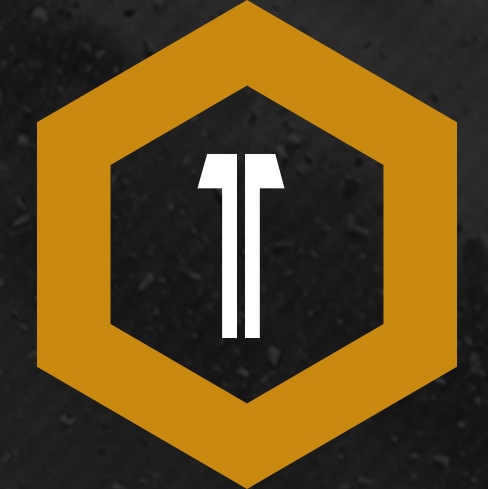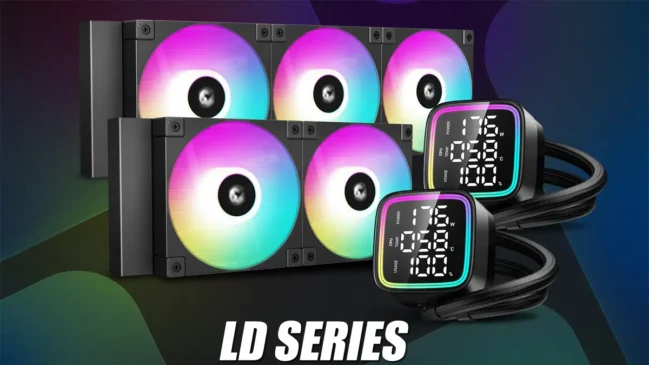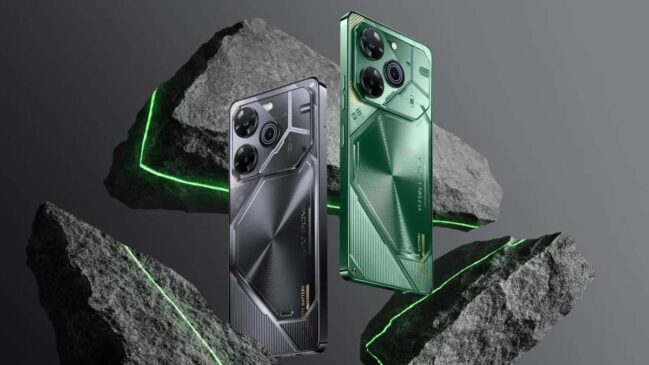
Asus is a jack of all trades company, from top of the line motherboards to headphones. In fact, they are pretty capable of making quality products. Today we will take a short look at the ROG Phone 3 from the house of Asus and take it for a short run to get a glimpse of its capabilities.
It was not much of a surprise when Asus decided to Launch the first ROG Phone in 2018. The market was abuzz with devices like Xiaomi Blackshark and Razer Phone specifically targeted at gamers. Asus went a step ahead and secured an agreement with Snapdragon for special binned SD 845 processors to release the fastest phone in the market.
Cut to 2020, the third iteration of the ROG Phone is here armed with the latest and possibly the greatest specification. Let us see if the third-gen ROG Phone lives up to its predecessor’s fame.
Specifications
| ROG Phone II | ||
|---|---|---|
| SoC | Qualcomm Snapdragon 865+ 1x Cortex A77 @ 3.1GHz 3x Cortex A77 @ 2.42GHz 4x Cortex A55 @ 1.80GHz Adreno 650 @ 670MHz |
|
| DRAM | upto 12 GB LPDDR5 |
|
| Storage | up to 512GB UFS 3.1 | |
| Display | 6.59″ AMOLED | |
| 2340 x 1080 (19.5:9) | ||
| 144Hz | ||
| 270Hz Touch | ||
| Size | Height | 171.0 mm |
| Width | 78 mm | |
| Depth | 9.85 mm | |
| Weight | 240 grams | |
| Battery Capacity | 6000mAh | |
| 30W charging (PD) | ||
| Rear Cameras | Main | 64MP IMX686 |
| 0.8µm pixels (1.6µm 4:1 16MP) | ||
| f/1.8 | ||
| Wide | 13MP | |
| 125° wide-angle | ||
| f/2.4 | ||
| Extra | 5MP Macro | |
| Front Camera | 24MP | |
| I/O | USB-C 3.1 (Side) | |
| USB-C 2.0 (Bottom) | ||
| Wireless (local) | 802.11ax WiFi-6 | |
| Bluetooth 5.1 LE + NFC | ||
| Other Features | Dual Stereo Speakers | |
| Under-Display Fingerprint Sensor | ||
| Dual-SIM | Dual nanoSIM | |
| Price | 8+128GB + S865+ : ₹46,999 | |
| 12+128GB + S865+: ₹49,999 | ||
| 12+256GB + S865+: ₹54,999 | ||
So specs-wise we have a smartphone with Snapdragon 865 Plus processor and an overclocked Adreno 650 GPU with custom OC profiles. The package also includes high-speed UFS 3.1 storage and LPDDR5 RAM. There’s also dual-band Wi-Fi 6 (802.11ax), multiple positioning systems including NavIC, and NFC. Asus lists Bluetooth 5.1 with the aptX HD, adaptive, and TWS+ protocols plus AAC and LDAC, basically all the cool power tools are included in the package except wireless charging. The winner is, however, the 6.59-inch 1080×2340-pixel AMOLED panel. The ROG Phone 3 comes at a somewhat hefty 240Gms but the phone doesn’t feel heavy in the hand. Overall, a very nice premium package.
Design and Display
Holding the ROG Phone 3, one clearly gets the idea that this is a phone solely targeted at the gamer in you. The Sci-Fi looks with the distinguishable ROG Logo at the back reminds us of the design heritage of the first two phones in the series. However, there are subtle changes across the design that sets its apart. For example, the copper heat sink on the glass back now sits under a transparent window and the geometric visuals are less aggressive.

From the front, Asus has gone with a 6.59-inch 1080×2340-pixel AMOLED panel with no notch. It’s an HDR 10+ certified display with a variable refresh rate of 60Hz, 90Hz, 120Hz, and 144Hz along with an auto mode. There are rumors of a hidden 160Hz but we haven’t gone looking for it during our short stint with it.
The fingerprint display is integrated with the screen. It is fast and convenient, but as with other in-display scanners, it’s less reliable. The top and bottom bezels are chunky thanks to two front-firing speakers with dual amplifiers and Dirac HD enhancement.

The volume rocker and power button are on the side alongside two capacitive “AirTriggers”. On the left, there is one side mounted USB-C along with a proprietary connector for accessories including the famed AeroActive cooler. And there’s a lone USB-C port at the bottom for charging. All that jazz saves no place for a headphone jack so that is taken care of by the USB-C to 3.5mm adaptor. The USB-C port on the bottom supports data transfers and USB 2.0 speed (480Mbps) and quick charging using the Qualcomm QC 3.0 standard. The one on the side is a bit more upgraded with USB 3.1 Gen2 speed (10Gbps) and QC 4 charging support and it also supports DisplayPort 1.4 video output at up to 4K resolution. The charger that comes in the box is QC 4.0 and USB-PD 3.0 charge compliant and delivers 30W of power. The phone comes with multiple charging modes that optimises battery life by limiting the charging limit.
Software and Game Enhancements
The ROG Phone 3 comes with a number of software enhancements and tweaks. For starters we have Android 10 with the July 2020 patch and a heavily customised dark theme. The icons feel clunky at times, but that could just be me nitpicking. Options include an always-on screen, gesture navigation and shortcuts, app cloning, and a built-in screen recorder among others.
The main center of attraction is the Asus Armory Crate application which houses most of the tuning. We have an extensive range of tuning starting from the customization of the ROG Logo to activating the SOC overclocks. A lot can be done within the application which is simple impressive. We will let the screenshots do the talking since they are self-explanatory for the most part.
Performance
Performance-wise this phone ranks among the top phones in the market, We spent a copious amount of time playing COD Mobile, Asphalt 9, and a host of old NES and DS games in simulators. The phone never broke a sweat. Surely, it got hot as it should but the experience was never uncomfortable or laggy.
Since no review is complete without some benchmark numbers, we decided to run a few. The phone automatically boosted while the apps were run (which we disabled promptly since we wanted to know the stock performance.) Antutu gave me a score of 623,700. Geekbench managed a respectable score of 950 and 3170 respectively.
Coming to graphics based workloads, we saw a score of 9,895 points in 3DMark’s Sling Shot Unlimited test and 8650 in Sling Shot Extreme Unlimited while Wildlife saw 4120 and Wild Life Unlimited saw 3995. GFXBench’s saw a score of 146FPS in T-rex scene, 69fps in Manhattan 3.1, and 43fps in Car Chase.
We also ran PCMark for Android. Work saw a score of 18950 with battery life of just around 11HR 30 Min while work 2.0 saw a score of 14000 with battery life just touching 11 Hrs.
Coming to day-to-day usage, the phone fits as a daily driver should you intend to use it. The usual email and browsing and social media posed absolutely no challenge. The phone, however, might not be very appealing to someone who is not looking for audiovisual performance. This is primarily because the phone is very bulky and you will start to feel fatigued after some time.
The camera is a bit of a let down for me. The main camera is a 64MP shooter with an f/1.8 aperture and supports quad-pixel binning for super-sharp 16MP photos assisted by a 13MP ultra-wide lens with an f/2.4 aperture and a 5MP macro lens with an f/2.0 aperture. On the front side, we have a 24MP unit with an f/2.0 aperture.

The daylight shots are crisp and came out perfect. The color balance was perfect and objects in distance also came up crisp. The “portrait” mode is mediocre at best. Photos taken in dark takes a dip in quality thanks to the absence of optical stabilisation. The night mode however, is a the saving grace. Overall, the camera is nothing to write home about, I can probably get better shots in any mid range device even from Asus. Some sample shots are below so that you can make your own opinion about it.



For better resolutions and details please refer to the IMGUR Link : https://imgur.com/gallery/IGnOfKb
Final words
The ROG Phone 3 is clearly not for everyone. There are plenty of options that costs less and much sleeker to live with like the OnePlus 8 series, the Mi 10 5G or the Samsung S10. 99% of the users will be happy with those phones.
However, there’s that niche 1% who would want the absolute best in terms of performance and raw power. The ROG Phone 3 with its Snapdragon 865+ SoC, 144Hz screen, AirTriggers, and accessory ecosystem is for that niche. Asus is confidence in expansion of that niche 1% userbase who wants to showoff the “gamer” aesthetic lifestyle along with a beast of a phone.
Overall, the ROG Phone 3 is a very premium all-rounder barring a few touches like an IP rating and wireless charging.




















